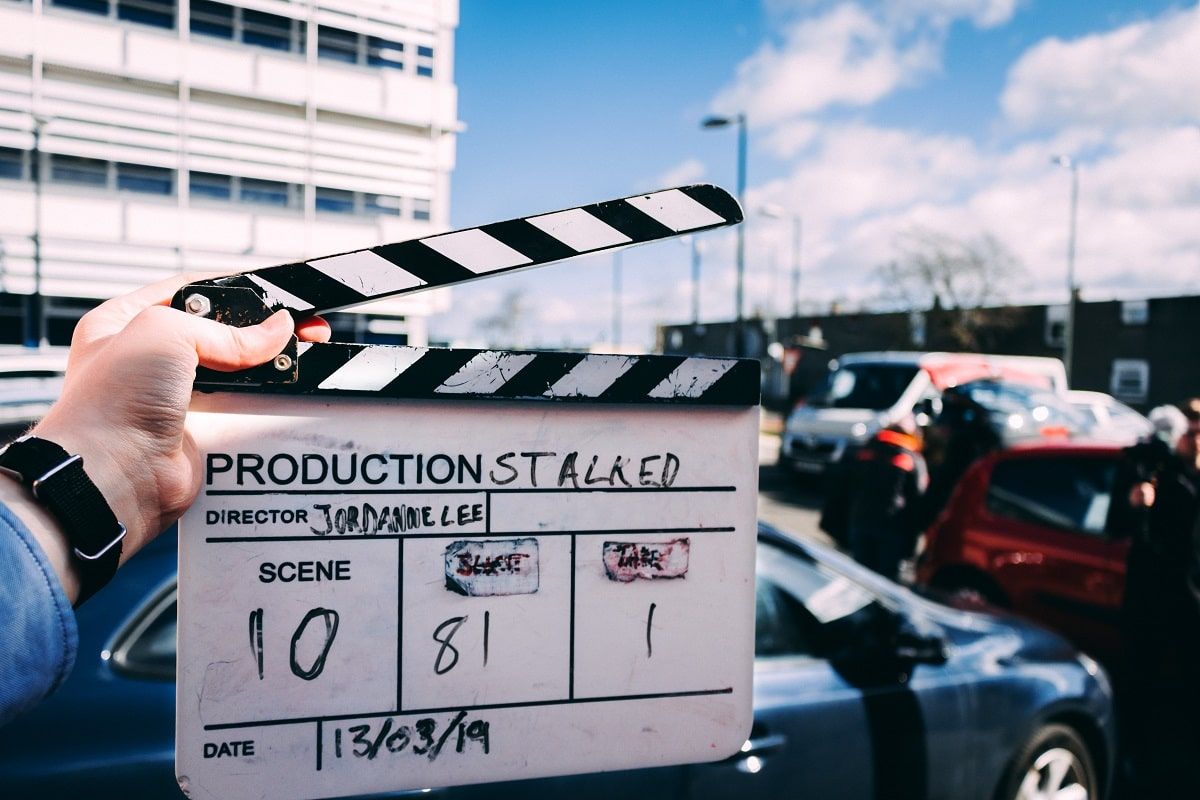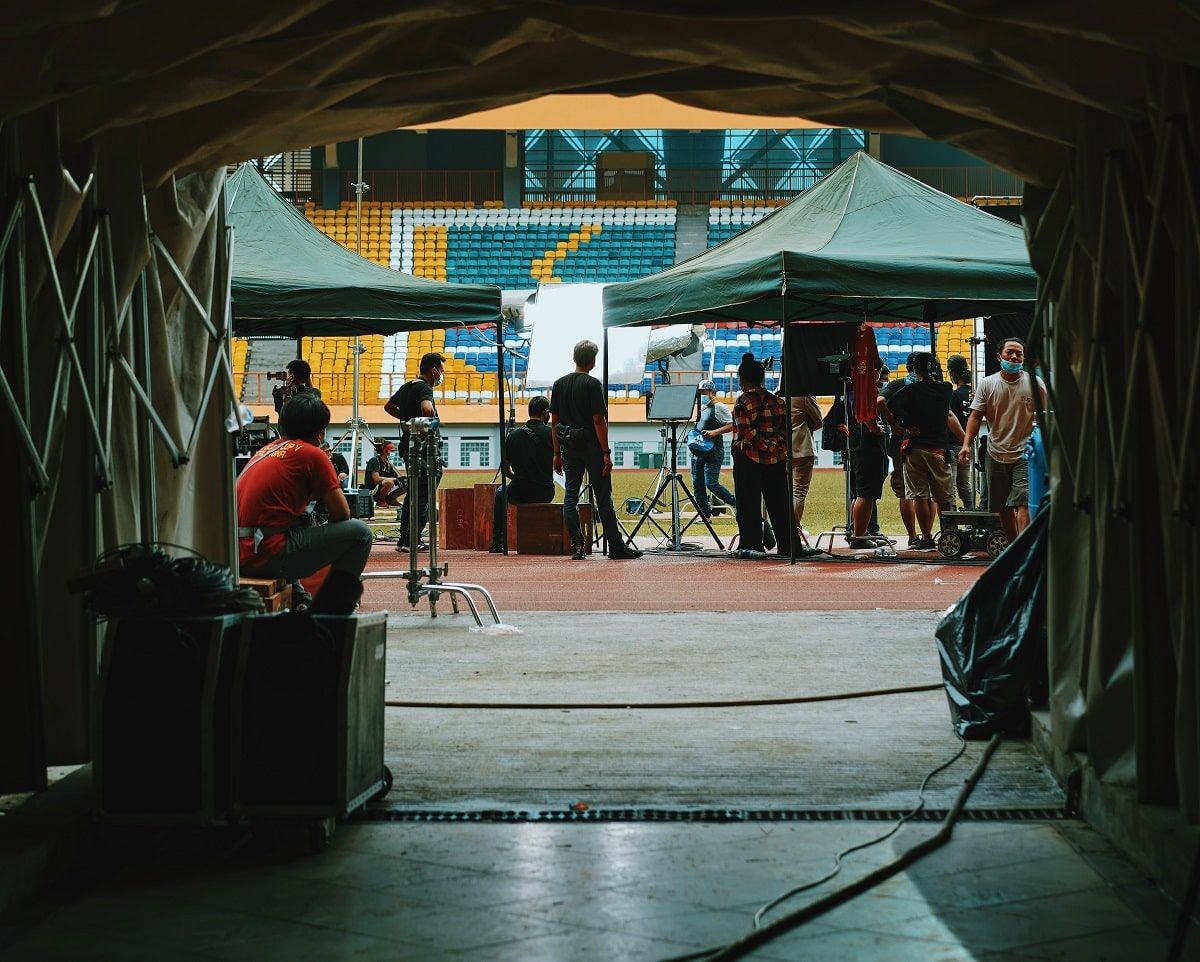Shooting Schedule: What Is It & Why Do You Need It?
Hire film gear from local filmmakers.

Hire film gear from local filmmakers.
During the production of a film, poor planning can be devastating for the budget. Having different crew members sitting around doing nothing or constantly doing inefficient relocations is not good.
That's why you need a shooting schedule! To manage everything that entails the shooting of a production.
In this article, we will go through the main components of a shooting schedule. But don't worry about creating one because we have done that for you!
Download your FREE Shooting Schedule template right here!
If you want to learn more about film production in general, then check out our article on filmmaking right here!

What is a Shooting Schedule?
A shooting schedule is a document that allows you to plan and manage your time on set.
You put in different variants like the locations, time, cast and so on. You also use it to show the estimated time of each scene and plan break times.
Before the computer, they used stripboards, where each strip represented a scene. Nowadays, it usually runs in software like Excel.
Using computer software is easier to manage and move around strips. It also allows for several people to be modifying it remotely.
The assistant director or the producers typically makes the shooting schedule. It all depends on the size of the production.
Why should you use it?
A shooting schedule is relevant for everyone in the production. The producer, director and cast members all use it.
The producers can plan the different sets, locations, props and transportation needed. They can reorganise the strips if needed.
The director can use it to plan specific shots and scenes. The actors can use it to know what lines they should rehearse. They can also use it to get in the mindset of a given day.
How a shooting schedule works
As mentioned earlier, you would use software like Excel to create and manage each strip for your production. These are the typical things you need to include in your shooting schedule.
General Information
These strips are for general info about the project itself. It includes all the things that do not have to do with the shooting of the scenes themselves. It is things like names and breaks. It is important to plan for e.g. moving locations or food breaks.
Production Information
You start by naming the Project, Producer and Director. Afterwards, you write the day for the shoot, as well as the total amount of days.
It is a great way to keep track of the different shooting days and who is running each shoot. For example, if you shoot a TV series, you might switch directors for each episode.
It is also important to note that the orders and times of the shoots are subject to change. You can never have complete control over production.
Day / Breaks
Noting the start and end of each day is neat to clarify the expectations of each day of the shoot.
It is also a good thing to implement breaks in the schedule for breakfast, lunch, set-up of equipment. Pretty much every strip of time where shooting is not happening is vital to plan.
Adding company move strips for when the production moves to another location is also a great idea.

Shooting Information
These strips are for the shooting info, so all the information concerning the actual shooting of the scenes. This could be the scheduled time for each activity or whether a scene is shot indoors or outdoors.
Time schedule
Here you would enter the set time of the day that a given event or scene is happening. It's vital to add buffer time for flexibility should something unexpected occur.
Scene/Setting
This strip includes the scene's number as well as the general setting. It would typically mean a short description of what is happening in the strip. This can help the production crew to plan ahead for the different sets needed.
Day/Night
Here you would put whether it is a day or night shoot. The production crew needs to know in terms of lighting. If it is a night shoot your crew might need to get a hold of some specific lights.
Int/Ext
Whether it is Interior or Exterior is also a great thing for the production crew to know. You have more control over the environment with indoor production. There are also different sound and lighting equipment needed for outdoor shoots.

Location
In here, you put the location of the specific scene. By doing so, you can better plan a day by not having to relocate as often. Moving a location is really expensive, and doing efficient shoots is a way to open up the budget.
Cast
This strip is to name the cast members needed for a scene. This strip is another terrific way of managing time better, and it means that unneeded cast members are not sitting around for hours.
Dialogue
Here, you write the dialogue that happens in a scene. The actors use this for the preparation of their lines. It also gives the director and the production crew an idea of what part of the script the scene will incorporate.
Estimated shoot time
This strip focuses purely on how long the shooting time will be for a given scene. It's good to have if you want to move around strips for any reason. It makes it easier to lay the puzzle of the production schedule. If you have two different strips with the same estimated time, it would be easy to move them around. This could be if an actor in one of the strips has cancelled.
Notes
The last strip is simply for notes that are important for anyone involved to know. It could be that you need a dolly or a drone shot. Or that you have to remember a specific key light.
Closing thoughts:
I hope this article made you a little wiser on the importance of a shooting schedule.
A production always needs good documents to keep everything running smoothly. Luckily we have made a bunch of film production templates available for FREE right here!
Shooting Schedule FAQ
How do you make a shooting schedule?
- Production Information
- Day/Breaks
- Time
- Scene/setting
- Day/night
- Int/Xxt
- Location
- Cast
- Estimate shoot time
- Notes
Why is a shooting schedule important?
It is important to plan and manage time. It also helps with cutting down excessive relocations. It will do wonders for your production budget.
Who makes the shooting schedule?
If it is a large production, the assistant director makes it. If it is a smaller production, the producers could make it themselves.






















